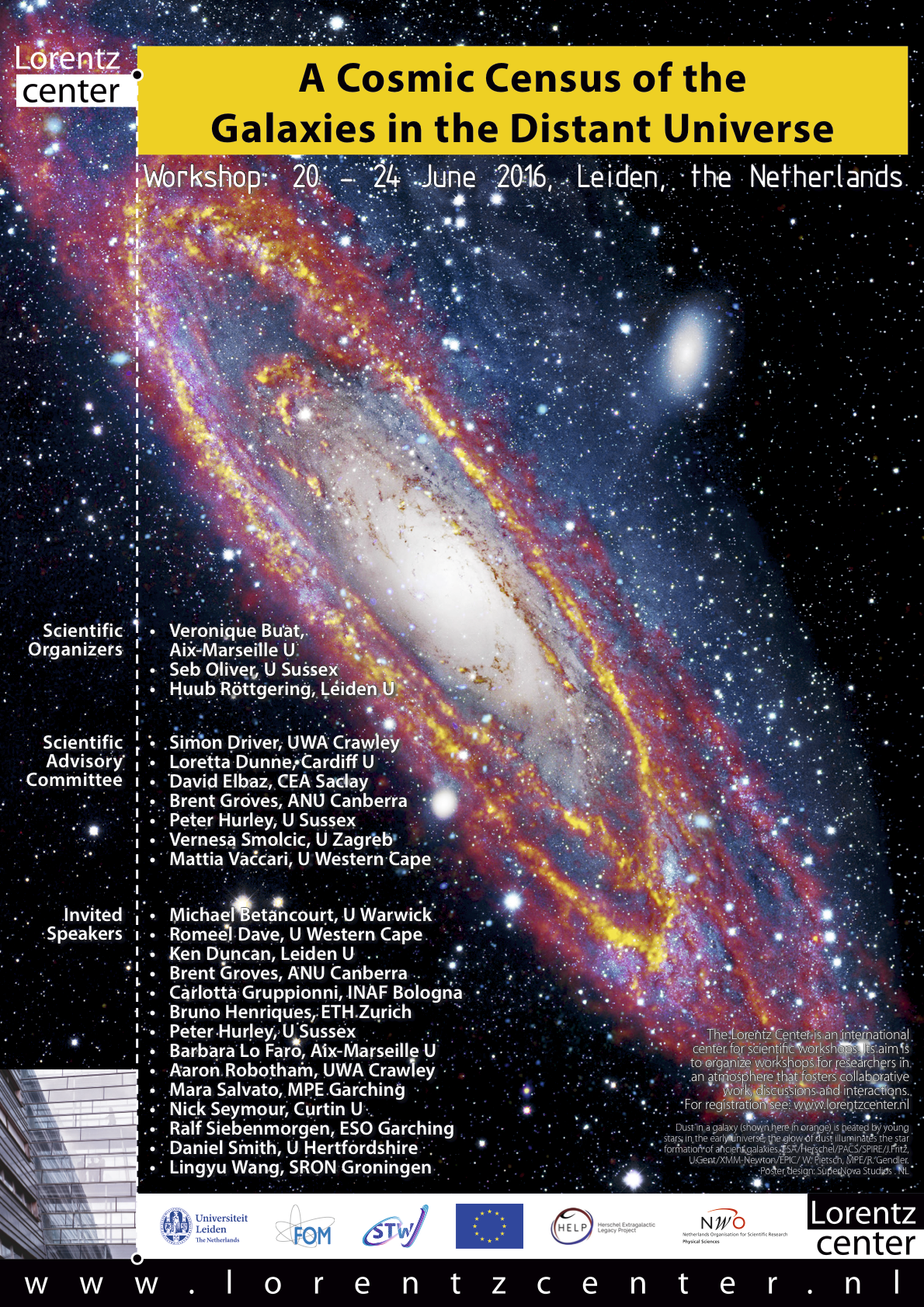A Cosmic Census of the Galaxies in the Distant Universe
June 20-24, 2016
Lorentz Center, Leiden, Netherlands
Meeting url: here
Understanding the evolution of galaxies across cosmic time is one of the great challenges of astrophysics. Galaxies found with many companions today are very different from those that are isolated. To understand how this came to be, we need to map a statistically representative range of environments in the early universe using telescopes that probe different physical processes.

The Herschel Extragalactic Legacy Project (HELP), funded by the European Commission Research Executive Agency, will address this by bringing together the many ambitious survey programmes carried out, or currently underway, at the major astronomical observatories. The radio surveys, in particular those from the LOFAR facility led from the Netherlands, are particularly important as they probe the star formation and active galactic nuclei activity in the distant Universe and will be the pathfinders for the future observations with the Square Kilometre Array.
The foundation of HELP is data from the European Space Agency’s (ESA) Herschel space mission. Exploration of the star formation history of the universe, using extragalactic surveys, was a major goal of the Herschel mission. However, the Herschel images have a relatively low resolution. By combining the data from many observatories, utilizing advanced statistical techniques and developing new tools HELP intends to overcome the limited resolution and enable astronomers in Europe to realize Herschel’s full potential. This will also provide crucial insight for exploitation of the Japanese/European SPICA mission which has significant Dutch involvement through the leadership of the SAFARI instrument. Herschel also has a powerful synergy with the radio surveys by probing the star formation that has been obscured to conventional telescopes by dust.
HELP also aims to create new standards in delivering value-added, user-friendly, data and tools. This will enable these wide varieties of data to be used in an efficient, homogenous and rigorous manner to address fundamental questions about the statistics of galaxy populations and as a fundamental resource providing well-defined samples of interesting galaxy populations for follow-up studies by new facilities such as ALMA.
Our workshop is timed for the midpoint of the HELP project. It will bring together for the first time the European scientists who are expected to be key beneficiaries of HELP, with members of the international multi-wavelength survey teams (including LOFAR) and the core HELP team. Through direct interaction between the HELP team and the users, HELP can get feedback and make adjustments to future direction of project so that final data products and tools have the greatest legacy value possible and thus provide the key tools and data products to enable European astronomers to understand the growth of galaxies across the history of the Universe.
The key objectives are to:
- review the scientific questions that these multi-wavelength datasets need to address
- review the available, ongoing and planned datasets and assess the needs for new observations
- review the different approaches to resolving the Herschel confusion challenge
- compare the methods for modelling the intrinsic physical properties of galaxies from their observed photometric properties
- discuss the requirements for meta data to define the selection effects of multi-wavelength survey data to enable the desired statistical studies
- assess the requirements for tools and delivery of data to best meet the needs of the community in addressing the statistical questions.
The Scientific Organizing Committee is:
- Seb Oliver
- Peter Hurley
- Mattia Vaccari
- Huub Rottgering
- Veronique Buat
- Vernesa Smolcic
- Simon Driver
- Brent Groves
- David Elbaz
- Loretta Dunne